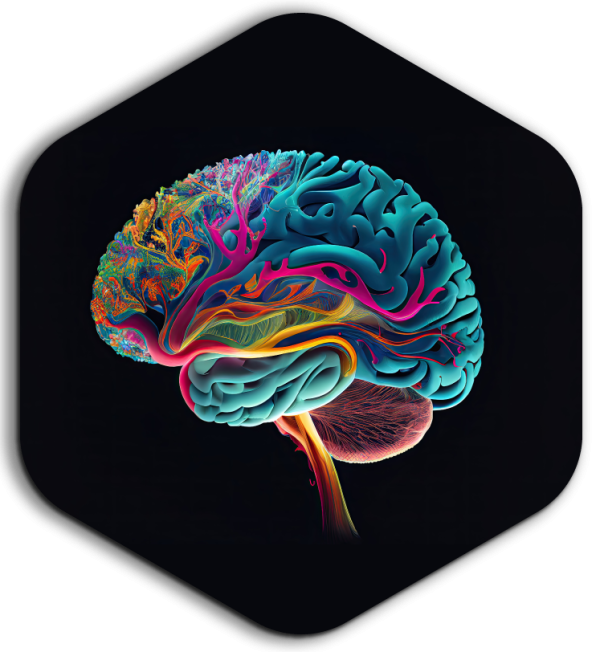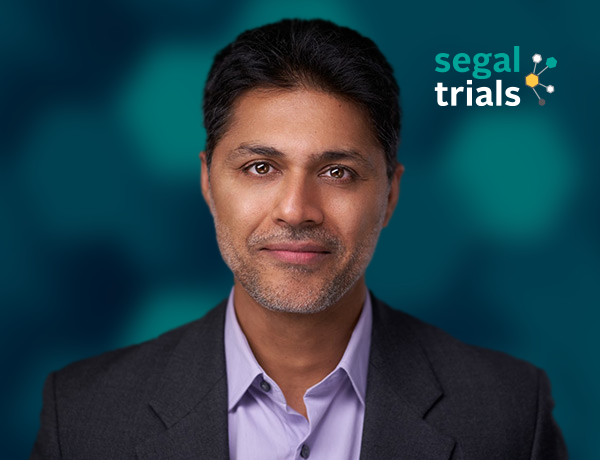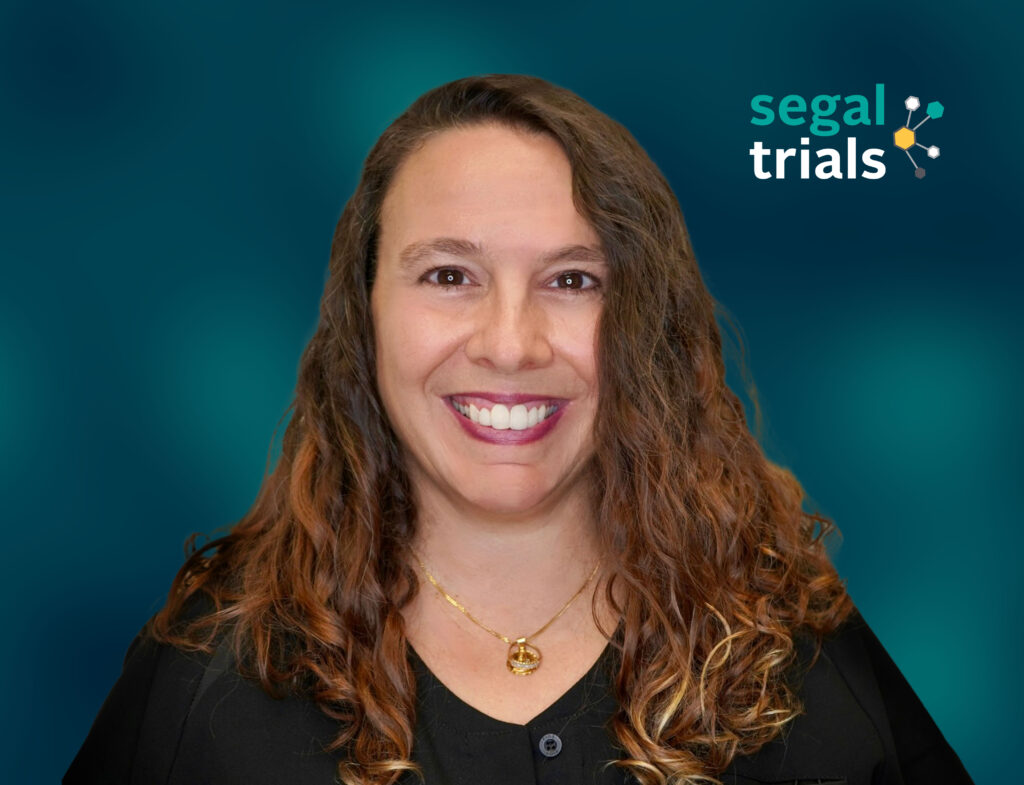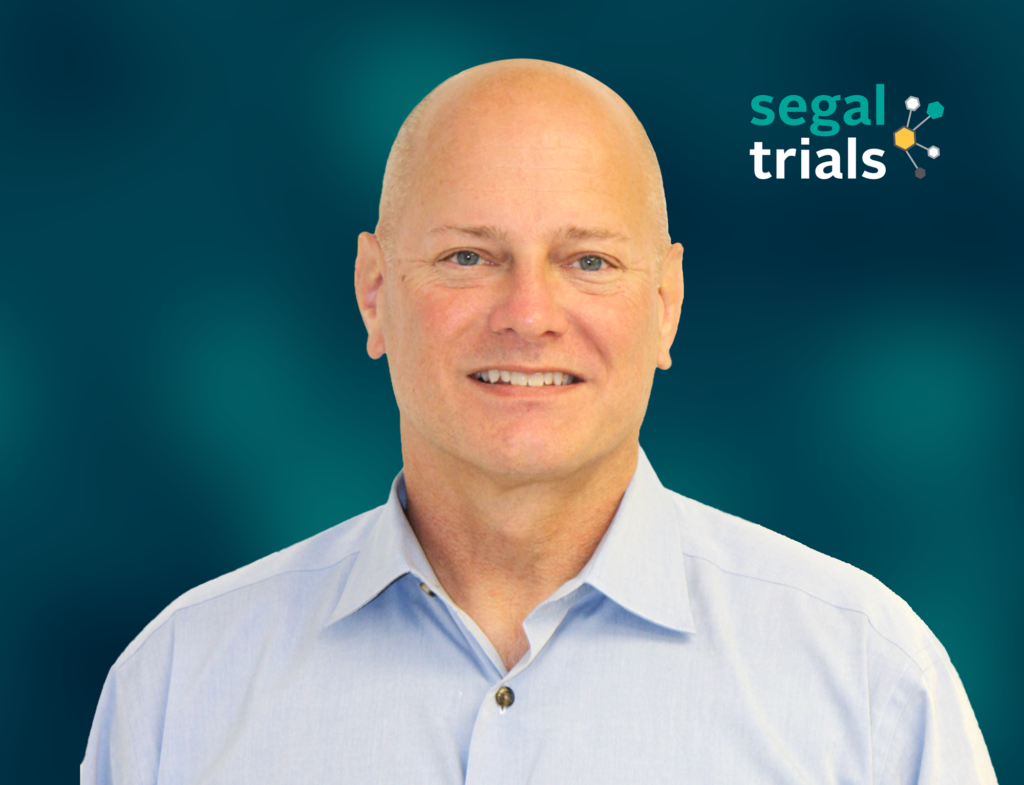Psychiatric Health
On the cutting edge of research


NEUROLOGY & PSYCHIATRY
Segal Trials has conducted clinical research for 25 years. During this time, they have evolved their core capabilities in response to the demand for new treatments for the market and expanded outreach to deliver the value of clinical research to millions around the world – one clinical research study at a time. To date, Segal Trials has been integral to the FDA (Food and Drug Administration) approval of over 57 drugs and devices.
Offering full-service inpatient and outpatient care dedicated to psychiatry and neurology research. With state-of-the-art equipment in a relaxed and comfortable setting to accommodate the clinical research participants. The doctors and staff are seasoned in psychiatry and neurology and are passionate about research and patient care.
MILESTONES
- Conducting research trials since 1998
- Total of 13 investigators
- 5 Principal Investigators – all physicians
- 5 Sub Investigators – MD, APRN, NP, PA, & PA-C’s
- Investigators have 75+ years of collective clinical trial experience
- Over 1,500 studies conducted
- Experience within 75+ therapeutic indications
- Helped achieve 57+ FDA approved medications
NEUROLOGY & PSYCHIATRY
MEET THE EXPERTS
Segal Trials specializes in Phase I-IV outpatient and inpatient research dedicated to psychiatry and neurology drug trials. The highly trained facilitators are supported by a well-established team of research professionals, innovative recruitment experts, and patient focused staff.
Psychiatry and Neurology Studies Clinical Team

Dr. Rishi Kakar
Chief Scientific Officer • Medical Director and Principal Investigator • Board Certified Psychiatrist • Diplomate, American Board of Psychiatry and Neurology


Olga Marie Lapeyra, MD, CCRP
Principal Investigator


Theodore Treese, MD, MBA
Principal Investigator
Indications
Attention Deficit Hyperactivity Disorder (ADHD) is a condition that becomes apparent in some children in the preschool and early school years.1 It is hard for these children to control their behavior and/or pay attention. (1) It is estimated that between 3 to 5 percent of children have ADHD, or approximately 2 million children in the United States.(1) This means that in a classroom of 25 to 30 children, it is likely that at least one will have ADHD.(1) ADHD may often continue into adulthood. According to the most recent version of the Diagnostic and Statistical Manual of Mental Disorders (DSM-IV-TR), there are three patterns of behavior that indicate ADHD. (2) People with ADHD may show several signs of being consistently inattentive. (1) They may have a pattern of being hyperactive and impulsive far more than others of their age.1 Or they may show all three types of behavior. This means that there are three subtypes of ADHD recognized by professionals. (1) These are the predominantly hyperactive-impulsive type (that does not show significant inattention); the predominantly inattentive type (that does not show significant hyperactive-impulsive behavior) sometimes called ADD – an outdated term for this entire disorder; and the combined type (that displays both inattentive and hyperactive-impulsive symptoms).(1)
References
Attention Deficit Hyperactivity Disorder (ADHD) afflicts approximately 3 to 5% of adolescents, and an estimated 60% of those will maintain the disorder into adulthood. (1) Much like adolescents, adults with ADHD may have difficulty following directions, remembering information, concentrating, organizing tasks or completing work within time limits. (1) If these difficulties are not managed appropriately, they can cause associated behavioral, emotional, social, vocational, and academic problems. (1)
References
Alzheimer’s disease (AD) is the most common form of dementia among older people.1 There are now more than 5 million people in the United States living with Alzheimer’s Disease.2 AD usually begins after age 60; the risk goes up as you get older, and may increase if a family member has had the disease.1 No treatment can stop the disease. However, some drugs may help keep symptoms from getting worse for a limited time.1
References
Anxiety Disorders affect about 40 million American adults age 18 years and older (about 18%) in a given year.2 Unlike the relatively mild, brief anxiety caused by a stressful event (such as speaking in public or a first date), anxiety disorders last at least 6 months and can get worse if they are not treated.1 Anxiety disorders commonly occur along with other mental or physical illnesses, including alcohol or substance abuse, which may mask anxiety symptoms or make them worse.1 Effective therapies for anxiety disorders are available, and research is uncovering new treatments that can help most people with anxiety disorders lead productive, fulfilling lives.1 Treatment choices depend on the problem and the person’s preference. There are several types of anxiety disorders, each affecting a large number of people every day:
- Social Anxiety Disorder: Social Phobia, or Social Anxiety Disorder, is an anxiety disorder characterized by overwhelming anxiety and excessive self-consciousness in everyday social situations.3 Social phobia can be limited to only one type of situation – such as a fear of speaking in formal or informal situations, or eating or drinking in front of others – or, in its most severe form, may be so broad that a person experiences symptoms almost anytime they are around other people.3
- Panic Disorder: Panic disorder is an anxiety disorder and is characterized by unexpected and repeated episodes of intense fear accompanied by physical symptoms that may include chest pain, heart palpitations, shortness of breath, dizziness, or abdominal distress.4
- Generalized Anxiety Disorder (GAD): People with generalized anxiety disorder (GAD) go through the day filled with exaggerated worry and tension, even though there is little or nothing to provoke it.5 They anticipate disaster and are overly concerned about health issues, money, family problems, or difficulties at work; sometimes just the thought of getting through the day produces anxiety.5 GAD affects about 6.8 million adult Americans2 and about twice as many women as men.
- Post-Traumatic Stress Disorder (PTSD): Post-Traumatic Stress Disorder, PTSD, is an anxiety disorder that can develop after exposure to a terrifying event or ordeal in which grave physical harm occurred or was threatened.7 Traumatic events that may trigger PTSD include violent personal assaults, natural or human-caused disasters, accidents, or military combat.7 PTSD affects about 7.7 million American adults,2 but it can occur at any age, including childhood.
- Obsessive-Compulsive Disorder (OCD): Obsessive-Compulsive Disorder, OCD, is an anxiety disorder and is characterized by recurrent, unwanted thoughts (obsessions) and/or repetitive behaviors (compulsions).8 Repetitive behaviors such as hand washing, counting, checking, or cleaning are often performed with the hope of preventing obsessive thoughts or making them go away.8 Performing these so-called “rituals,” however, provides only temporary relief, and not performing them markedly increases anxiety.8 OCD affects about 2.2 million American adults,2 and usually appears in childhood, adolescence, or early adulthood.6
References
- The National Institute of Mental Health – Anxiety Disorders
- Kessler RC, Chiu WT, Demler O, Walters EE. Prevalence, severity, and comorbidity of twelve-month DSM-IV disorders in the National Comorbidity Survey Replication (NCS-R). Archives of General Psychiatry, 2005 Jun;62(6):617-27.
- The National Institute of Mental Health – Social Phobia
- The National Institute of Mental Health – Panic Disorder
- The National Institute of Mental Health – Generalized Anxiety Disorder (GAD)
- Robins LN, Regier DA, eds. Psychiatric disorders in America: the Epidemiologic Catchment Area Study. New York: The Free Press, 1991.
- The National Institute of Mental Health – Post-Traumatic Stress Disorder (PTSD)
- The National Institute of Mental Health – Obsessive-Compulsive Disorder (OCD)
Asperger’s syndrome (or disorder) is a developmental disorder in which people have severe difficulties understanding how to interact socially.1 People with Asperger’s syndrome may not recognize verbal and nonverbal cues or understand normal social rules, such as taking turns talking or recognizing personal space.1
Asperger’s syndrome and autism belong to a class of disorders called pervasive developmental disorders.1 Asperger’s syndrome shares some similarities with autism.1 Like those with autism, children with Asperger’s syndrome have abnormal social interactions, facial expressions and gestures, and unusually focused interests.1 Unlike those with autism, children with Asperger’s syndrome usually have normal intelligence and language development (although the rhythm, pitch, and emphasis are irregular), age-appropriate self-reliance, and interest in the world around them.1
Children with Asperger’s syndrome have a better outlook than those with other developmental disorders.1 Many lead productive, independent lives in adulthood.1
Asperger’s syndrome affects males more than females.1 Its cause is unknown, although it tends to run in families, suggesting a possible genetic link.1
References
Autism spectrum disorder (ASD) is a range of complex neurodevelopment disorders, characterized by social impairments, communication difficulties, and restricted, repetitive, and stereotyped patterns of behavior.1 Autistic disorder, sometimes called autism or classical ASD, is the most severe form of ASD, while other conditions along the spectrum include a milder form known as Asperger’s syndrome, the rare condition called Rett syndrome, and childhood disintegrative disorder and pervasive developmental disorder not otherwise specified (usually referred to as PDD-NOS).1 Although ASD varies significantly in character and severity, it occurs in all ethnic and socioeconomic groups and affects every age group.1 Experts estimate that three to six children out of every 1,000 will have ASD.1 Males are four times more likely to have ASD than females.1
References
Bipolar disorder, also known as manic-depressive illness, is a brain disorder that causes unusual shifts in a person’s mood, energy, and ability to function.1 Different from the normal ups and downs that everyone goes through, the symptoms of bipolar disorder are severe.1 About 5.7 million American adults or about 2.6 percent of the population age 18 and older in any given year,2 have bipolar disorder. Bipolar disorder typically develops in late adolescence or early adulthood.1 Like diabetes or heart disease, bipolar disorder is a long-term illness that must be carefully managed throughout a person’s life.1 Most people with bipolar disorder – even those with the most severe forms – can achieve substantial stabilization of their mood swings and related symptoms with proper treatment.3,4,5 Because bipolar disorder is a recurrent illness, long-term preventive treatment is strongly recommended and almost always indicated.1
References
- The National Institute of Mental Health – Bipolar Disorder
- Kessler RC, Chiu WT, Demler O, Walters EE. Prevalence, severity, and comorbidity of twelve-month DSM-IV disorders in the National Comorbidity Survey Replication (NCS-R). Archives of General Psychiatry, 2005 Jun;62(6):617-27.
- Sachs GS, Printz DJ, Kahn DA, Carpenter D, Docherty JP. The expert consensus guideline series: medication treatment of bipolar disorder 2000. Postgraduate Medicine, 2000; Spec No:1-104.
- Sachs GS, Thase ME. Bipolar disorder therapeutics: maintenance treatment. Biological Psychiatry, 2000; 48(6): 573-81.
- Huxley NA, Parikh SV, Baldessarini RJ. Effectiveness of psychosocial treatments in bipolar disorder: state of the evidence. Harvard Review of Psychiatry, 2000; 8(3): 126-40.
A depressive disorder is an illness that involves the body, mood, and thoughts.1 A depressive disorder is not the same as a passing blue mood; without treatment, symptoms can last for weeks, months, or years.1 Appropriate treatment, however, can help most people who suffer from depression.1 Depression affects people of all ages, ranging from children in pre-adolescent stages to the elderly.1 In any given 1-year period, 9.5 percent of the population, or about 20.9 million American adults, suffer from a depressive illness.2 Women suffer from depressive disorders at twice the rate of men.1 There are several types of antidepressant medications used to treat depressive disorders; these include newer medications chiefly the selective serotonin reuptake inhibitors (SSRIs) the tricyclics, and the monoamine oxidase inhibitors (MAOIs).1
References
Insomnia is difficulty in initiating and/or maintaining sleep.1 It is a term that is used often to indicate any and all stages and types of sleep loss.1 More than 35 million Americans complain of chronic insomnia.2 Each case is diagnosed according to that person’s particular needs.
References
A mild decline in memory and the rate of information processing occurs normally with age, but does not affect daily function and does not generally progress.1 Like the body’s muscles, bones, and other vital organs, the brain feels the effect of aging.1 Virtually everyone has this problem in older age.1 There are various methods and treatments offered to help improve one’s loss of memory.
References
- Healthscout.com – Health Encyclopedia – Diseases and Conditions
A migraine headache is a throbbing or pulsating headache that is often one sided (unilateral) and associated with nausea; vomiting; sensitivity to light, sound, and smells; sleep disruption; and depression.1 Attacks are often recurrent and tend to become less severe as the migraine sufferer ages.1 Migraines afflict about 30 million people in the United States.1 They may occur at any age, but usually begin between the ages of 10 and 40 and diminish after age 50.1 Some people experience several migraines a month, while others have only a few migraines throughout their lifetime.1 The cause of migraine is unknown.1 The condition may result from a series of reactions in the central nervous system caused by changes in the body or in the environment.1 Physicians currently analyze the patient’s migraine history to devise an appropriate treatment program.2 The goals of treatment are to prevent or reduce the number of migraines (called prophylactic treatment) and to alleviate symptoms and shorten the duration of the migraine (called abortive treatment).2
References
Pain is an unpleasant feeling that is conveyed to the brain by sensory neurons.1 The discomfort signals actual or potential injury to the body.1 However, pain is more than a sensation, or the physical awareness of pain; it also includes perception, the subjective interpretation of the discomfort.1 There are no diagnostic tests that can determine the quality or intensity of an individual’s pain.1 Therefore, a medical examination will include a lot of questions about where the pain is located, its intensity, and its nature.1 There are many drugs aimed at preventing or treating pain. Non-opioid analgesics, narcotic analgesics, anticonvulsant drugs, and tricyclic antidepressants work by blocking the production, release, or uptake of neurotransmitters.1 Drugs from different classes may be combined to handle certain types of pain.1
References
Personality disorders are long-term patterns of thoughts and behaviors that cause serious problems with relationships and work. People with personality disorders have difficulty dealing with everyday stresses and problems. They often have stormy relationships with other people. The exact cause of personality disorders is unknown. However, genes and childhood experiences may play a role. Symptoms vary widely depending on the specific type of personality disorder. Treatment usually includes talk therapy and sometimes medicine.
References
PDD-NOS, also called atypical autism or mild autism, means having differences in some of the same areas as in autism, only not to such a great extent.1 A child with PDD-NOS does not meet the criteria for any other specific PDD/ASD.1 This category is used to refer to children who have significant problems with communication and play, and some difficulty interacting with others, but are too social to be considered autistic.2
References
Schizoaffective disorder is a perplexing mental illness distinguished by a combination of symptoms of a thought disorder or other psychotic symptoms such as hallucinations or delusions (schizophrenia component) and those of a mood disorder (depressive or manic component).1 The coupling of symptoms from these divergent spectrums makes treating patients who are schizoaffective difficult.1 Schizoaffective disorder has features of both schizophrenia, including hallucinations, delusions, and distorted thinking, and a mood component, such as depression or mania.1 The diagnosis is made when the patient has features of both illnesses but does not strictly meet diagnostic criteria for either schizophrenia or a mood disorder alone.1 Several medications are used to treat schizoaffective disorder.1 Agent selection depends on whether the depressive or manic subtype is present.1 Early treatment with medication along with good premorbid function often improves outcomes. An estimated 6.5 million adults in the U.S. (3.1%) have schizoid personality disorder.2
References
Schizophrenia is a chronic, severe, and disabling brain disorder that affects about 1.1 percent of the U.S. population age 18 and older in a given year.1,2 People with schizophrenia may hear voices other people don’t hear or they may believe that others are reading their minds, controlling their thoughts, or plotting to harm them.1 These experiences are terrifying and can cause fearfulness, withdrawal, or extreme agitation.1 Available treatments can relieve many of the disorder’s symptoms, but most people who have schizophrenia must cope with some residual symptoms as long as they live.1 Many people with the disorder can now lead rewarding and meaningful lives in their communities.1 Because the causes of schizophrenia are still unknown, current treatments focus on eliminating the symptoms of the disease.1
References
- The National Institute of Mental Health – What is schizophrenia?
- Regier DA, Narrow WE, Rae DS, Manderscheid RW, Locke BZ, Goodwin FK. The de facto US mental and addictive disorders service system. Epidemiologic catchment area prospective 1-year prevalence rates of disorders and services. Arch Gen Psychiatry. 1993 Feb;50(2):85-94.

